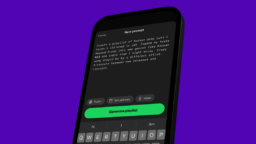Last year, Spotify raised the price of its Premium service for the first time, ending more than a decade of static prices at the music streaming service.
Now, a new report says more price hikes, and a change to its pricing model, are on the way.
According to a Bloomberg report on Wednesday (April 3), Spotify plans to raise its subscription price in five markets, including the UK, Australia, and Pakistan, by the end of April, and will raise prices in the US later this year.
Individual subscription plans will rise by $1 per month, while Duo and Family plans will rise by $2, Bloomberg reported, citing people familiar with the matter.
Additionally, Spotify is reportedly planning to launch a new “Basic” tier that will offer music and podcasts, but not audiobooks. The Premium subscription comes with 15 hours of audiobook listening time per month, with additional charges for use above that amount.
The Basic tier will be priced at the current price of the premium individual subscription: $11 per month. Basic-tier subscribers will have to pay additionally for any audiobook listening time.
Spotify has been pushing into the audiobook market – dominated in many markets by Amazon’s Audible – for several years, notably with the acquisition of audiobook distributor Findaway in 2021.
The company announced the inclusion of 15 hours of audiobook time for premium subscribers last October, giving paid subscribers access to a catalog of some 150,000 books.
The results of that “so far have been strong, at least in terms of consumption,” Bloomberg reported – implying that Spotify wants to generate higher revenue from audiobook consumption.
The first of these new price hikes comes just nine months after Spotify confirmed it would raise prices on its premium subscription in dozens of markets, including the US, where the price for an individual premium subscription rose from $10 per month to $11.
The family plan shifted from $16 to $17, and news of the latest price hikes indicates it will rise to $19 per month.
Spotify’s price hike last year came after most other global music streaming services, including Apple Music, Amazon Music and YouTube Music, had increased prices on their subscription plans.
The price hikes had been a major ask of many music industry execs for some time, amid fears that, without them, margins in the music business would suffer at a time of elevated inflation.
There were concerns that a price hike would cause subscriber cancellations, but that doesn’t seem to have been borne out: Paid subscribers at Spotify rose by 31 million, or 15%, in 2023, to a total of 236 million.
“We feel really good about how that went down,” Spotify CFO Paul Vogel said on an earnings call last autumn. “The churn was right in line with expectations… Just as importantly, we outperformed on the gross intake side, which is one of the reasons why we outperformed on overall [subscriptions].”
That strong performance has “given management confidence to seek even more” price hikes, Bloomberg reported, as the company aims to swing to profitability – something it hasn’t managed to do, on an annual basis, since it debuted on the stock market in 2018.
The new “Basic” tier is likely just the beginning of the stratification of Spotify’s subscription plans. Rumors have been circulating for some time that the DSP is working on a “Supremium” tier that will offer listeners 24-bit lossless audio. (Spotify is behind competitors such as Amazon Music and Apple Music in offering listeners HiFi-quality music options.)
The Supremium tier is also rumored to come with the ability to create custom playlists with the help of artificial intelligence.
The changes to pricing and plans come at a time when the Sweden-headquartered company is also making notable changes to its payouts to rightsholders.
Last October, MBW broke the news that Spotify is changing the way it calculates royalties for music, including a new requirement that a track must have been played at least 1,000 times in the prior 12 months to be included in the calculations of an artist’s royalties.
“A new part of the Spotify modus operandi is our focus on efficiencies.”
Daniel Ek, Spotify
Additionally, Spotify will require a minimum number of unique listeners for a track to qualify; and the company has increased the minimum length of a functional music track to two minutes, in an effort to prevent “bad actors” from “gaming the system with noise.”
These changes, which move Spotify towards an “artist-centric” royalty payment model, mean the company will be able to drive “an additional $1 billion in revenue toward emerging and professional artists over the next five years,” the company said in November.
As of the beginning of this month, all of the changes to payout calculations had been put into place.
The changes come after successive waves of layoffs at Spotify over the past year or so, seen as part of the company’s attempt to finally reach profitability. That includes a headcount reduction of around 1,500 last December, amounting to 17% of the company’s workforce.
“A new part of the Spotify modus operandi is our focus on efficiencies,” CEO Daniel Ek said last fall. “Paul [Vogel] and myself and the rest of the management team [are] constantly looking at how we can make improvements, and we’re constantly finding new ways to bring more efficiencies out of the business.”Music Business Worldwide





